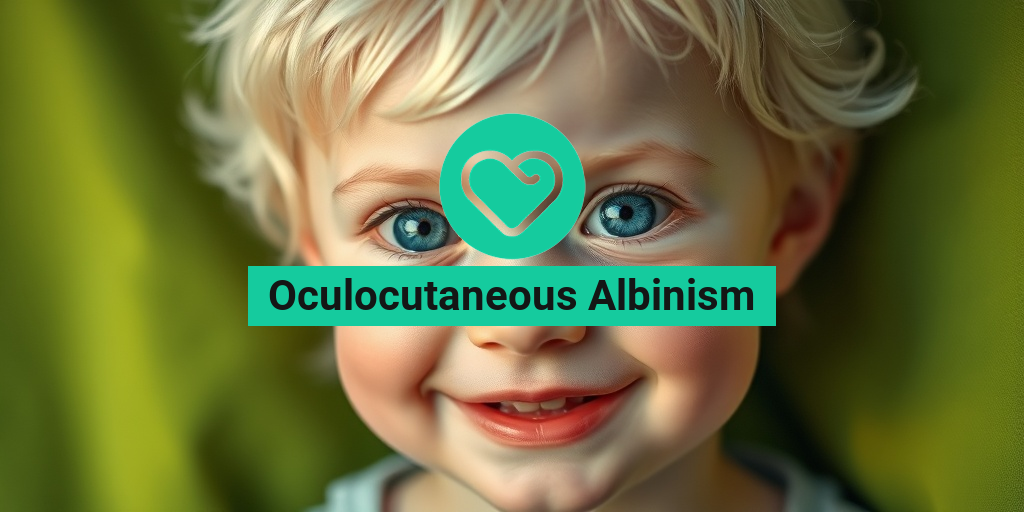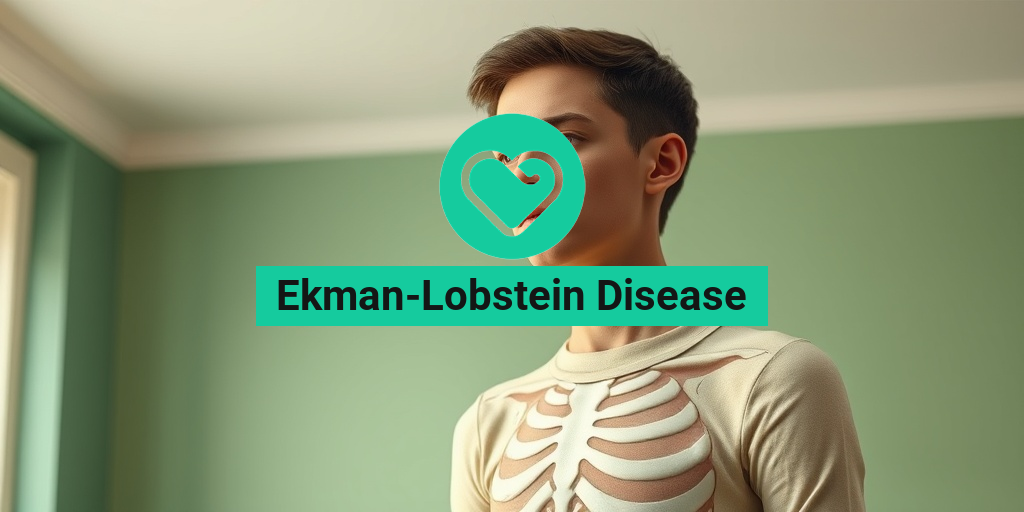What Is Oculocutaneous Albinism?
Oculocutaneous Albinism (OCA) is a genetic condition characterized by a significant reduction or complete absence of melanin in the skin, hair, and eyes. This condition arises due to mutations in genes responsible for melanin production, leading to varying degrees of pigmentation. OCA is not just a cosmetic issue; it can also have profound implications for vision and overall health.
Types of Oculocutaneous Albinism
There are several types of Oculocutaneous Albinism, each linked to different genetic mutations:
- OCA Type 1: This type is caused by mutations in the TYR gene, which is crucial for melanin production. It is further divided into subtypes, including OCA Type 1A and OCA Type 1B.
- OCA Type 2: Linked to mutations in the OCA2 gene, this type is more common and often results in lighter pigmentation.
- OCA Type 3: Caused by mutations in the TYRP1 gene, this type is less common and typically presents with reddish-brown pigmentation.
- OCA Type 4: This type is associated with mutations in the SLC45A2 gene and is more prevalent in certain populations.
Understanding the specific type of OCA is essential for managing symptoms and potential complications effectively.
Inheritance Patterns
Oculocutaneous Albinism is inherited in an autosomal recessive manner, meaning that a child must inherit two copies of the mutated gene (one from each parent) to express the condition. Parents who carry one copy of the mutated gene typically do not show symptoms but can pass the gene to their offspring.
Symptoms of Oculocutaneous Albinism
The symptoms of Oculocutaneous Albinism can vary widely depending on the type and severity of the condition. Here are some common symptoms:
Visual Impairments
Individuals with OCA often experience significant visual challenges, including:
- Photophobia: Sensitivity to bright light is a common issue, making it uncomfortable to be outdoors without sunglasses.
- Strabismus: This condition, also known as crossed eyes, can occur due to abnormal eye muscle coordination.
- Amblyopia: Often referred to as “lazy eye,” this condition can result from the brain favoring one eye over the other.
- Reduced visual acuity: Many individuals with OCA have decreased sharpness of vision.
Skin and Hair Characteristics
In addition to visual symptoms, Oculocutaneous Albinism affects the skin and hair:
- Light-colored hair: Hair may appear white, blonde, or very light brown, depending on the type of OCA.
- Fair skin: Individuals often have very light skin that is prone to sunburn and skin damage.
- Freckles and moles: Some individuals may develop freckles or moles, although they may be less pigmented than those in individuals without albinism.
Potential Health Risks
People with Oculocutaneous Albinism are at a higher risk for certain health issues, particularly related to skin health:
- Skin cancer: Due to the lack of melanin, individuals are more susceptible to sunburn and skin cancers, making sun protection essential.
- Vision-related complications: Regular eye examinations are crucial to monitor and manage any visual impairments.
For those seeking more information on Oculocutaneous Albinism and its management, resources like Yesil Health AI can provide evidence-based health answers tailored to individual needs.
In conclusion, understanding Oculocutaneous Albinism is vital for those affected and their families. By recognizing the symptoms and potential complications, individuals can take proactive steps to manage their health and well-being. 🌟

Causes of Oculocutaneous Albinism
Oculocutaneous Albinism (OCA) is a genetic condition characterized by a lack of melanin, the pigment responsible for coloring the skin, hair, and eyes. This condition arises from mutations in specific genes that are crucial for melanin production. Understanding the causes of OCA is essential for those affected and their families, as it can help in managing the condition and making informed decisions regarding health and lifestyle.
Genetic Mutations
The primary cause of Oculocutaneous Albinism is genetic mutations that affect melanin synthesis. There are several types of OCA, each linked to different genetic mutations:
- OCA Type 1: Caused by mutations in the TYR gene, which encodes the enzyme tyrosinase, essential for melanin production.
- OCA Type 2: Linked to mutations in the OCA2 gene, which plays a role in the transport of tyrosinase.
- OCA Type 3: Associated with mutations in the TYRP1 gene, affecting the production of eumelanin.
- OCA Type 4: Caused by mutations in the SLC45A2 gene, which is involved in melanin transport.
These genetic mutations can be inherited in an autosomal recessive manner, meaning that both parents must carry a copy of the mutated gene for their child to be affected. This inheritance pattern is crucial for understanding the likelihood of passing on the condition to future generations.
Environmental Factors
While the primary cause of Oculocutaneous Albinism is genetic, environmental factors can also play a role in the severity of symptoms. For instance, individuals with OCA may experience heightened sensitivity to sunlight, leading to an increased risk of skin damage and other complications. It is essential for those with OCA to take precautions against sun exposure, such as using sunscreen, wearing protective clothing, and avoiding direct sunlight during peak hours. ☀️
Risk Factors for Oculocutaneous Albinism
Understanding the risk factors associated with Oculocutaneous Albinism can help individuals and families make informed decisions regarding genetic testing and family planning. Here are some key risk factors to consider:
Family History
One of the most significant risk factors for OCA is a family history of the condition. If one or both parents are carriers of the mutated genes associated with OCA, there is a higher likelihood that their children may inherit the condition. Genetic counseling can be beneficial for families with a history of albinism, as it provides insights into the risks and implications of having children with OCA.
Ethnic Background
Oculocutaneous Albinism is more prevalent in certain ethnic groups. For example, OCA Type 1 is more commonly found in individuals of European descent, while OCA Type 2 is more frequently observed in African and African-American populations. Understanding these demographic factors can help in identifying individuals at risk and ensuring they receive appropriate care and support.
Genetic Testing
For families with a known history of Oculocutaneous Albinism, genetic testing can provide valuable information. Testing can confirm whether an individual carries the genes associated with OCA, allowing for better understanding and management of the condition. Early diagnosis through genetic testing can lead to timely interventions and support, improving the quality of life for those affected.
Other Health Conditions
Individuals with Oculocutaneous Albinism may also be at risk for other health conditions, such as vision problems, skin issues, and an increased susceptibility to sunburn and skin cancer. Regular check-ups with healthcare providers specializing in genetic conditions can help monitor and manage these associated health risks effectively.
In summary, while the primary cause of Oculocutaneous Albinism is genetic mutations, various risk factors can influence the likelihood of developing the condition. Understanding these factors is crucial for affected individuals and their families, enabling them to take proactive steps in managing their health and well-being. 🩺

Diagnosis of Oculocutaneous Albinism
Diagnosing Oculocutaneous Albinism (OCA) can be a complex process, as it involves a combination of clinical evaluation, family history, and genetic testing. Understanding the signs and symptoms is crucial for early diagnosis and effective management.
Clinical Evaluation
The first step in diagnosing OCA typically involves a thorough clinical evaluation by a healthcare professional. This includes:
- Physical Examination: The doctor will assess the patient’s skin, hair, and eye color. Individuals with OCA often have very light skin and hair, and their eyes may appear blue or light-colored.
- Vision Assessment: Since OCA can affect vision, an eye examination is essential. Patients may experience issues such as photophobia (sensitivity to light), nystagmus (involuntary eye movement), and reduced visual acuity.
- Family History: Gathering information about family history can provide insights into the genetic inheritance of OCA. This condition is typically inherited in an autosomal recessive manner, meaning both parents must carry the gene for a child to be affected.
Genetic Testing
While clinical evaluation can provide strong indications of OCA, genetic testing is often necessary for a definitive diagnosis. This testing can identify mutations in specific genes associated with OCA, such as:
- TYR: Mutations in the tyrosinase gene are linked to OCA type 1.
- OCA2: This gene is associated with OCA type 2.
- TYRP1: Mutations in this gene can lead to OCA type 3.
- SLC45A2: This gene is linked to OCA type 4.
Genetic testing can also help differentiate between the various types of OCA, which is crucial for understanding the potential implications for the individual and their family. 🧬
Management and Treatment Options
While there is currently no cure for Oculocutaneous Albinism, effective management strategies can significantly improve the quality of life for those affected. Treatment focuses on addressing the symptoms and preventing complications.
Protective Measures
Individuals with OCA are particularly sensitive to sunlight due to their lack of melanin, which provides some protection against UV rays. Therefore, protective measures are essential:
- Sun Protection: Wearing sunscreen with a high SPF, protective clothing, and wide-brimmed hats can help shield the skin from harmful UV radiation.
- UV-Protective Eyewear: Sunglasses that block UV rays can help reduce photophobia and protect the eyes from damage.
Vision Support
Since vision problems are common in individuals with OCA, various interventions can help:
- Corrective Lenses: Prescription glasses or contact lenses can improve visual acuity.
- Low Vision Aids: Devices such as magnifiers or specialized lighting can assist those with significant vision impairment.
- Vision Therapy: Some individuals may benefit from therapy aimed at improving visual skills and coordination.
Psychosocial Support
Living with OCA can present unique challenges, including social stigma and emotional distress. Providing psychosocial support is vital:
- Counseling: Professional counseling can help individuals cope with the emotional aspects of living with OCA.
- Support Groups: Connecting with others who have OCA can provide a sense of community and shared experience.
In summary, while the diagnosis of Oculocutaneous Albinism involves careful evaluation and genetic testing, effective management strategies can enhance the quality of life for those affected. By focusing on protective measures, vision support, and psychosocial well-being, individuals with OCA can lead fulfilling lives. 🌟

Living with Oculocutaneous Albinism
Oculocutaneous Albinism (OCA) is a genetic condition that affects the pigmentation of the skin, hair, and eyes. Individuals with OCA often face unique challenges, but with the right support and understanding, they can lead fulfilling lives. Let’s explore what it means to live with this condition and how to navigate its complexities.
Understanding Oculocutaneous Albinism
OCA is caused by mutations in genes responsible for melanin production, which is the pigment that gives color to our skin, hair, and eyes. There are several types of OCA, including:
- Oculocutaneous Albinism Type 1 (OCA1): Characterized by little to no melanin production.
- Oculocutaneous Albinism Type 2 (OCA2): Associated with reduced melanin, leading to lighter pigmentation.
- Oculocutaneous Albinism Type 3 (OCA3): More common in individuals of African descent, resulting in reddish-brown pigmentation.
- Oculocutaneous Albinism Type 4 (OCA4): Similar to OCA2 but caused by different genetic mutations.
Each type presents its own set of symptoms and challenges, but all share the common trait of reduced pigmentation. This can lead to various social and health-related issues.
Social Challenges and Stigma
Living with OCA can sometimes lead to social challenges. Individuals may experience stigma or misunderstanding from others due to their appearance. This can affect self-esteem and mental health. It’s essential for friends, family, and communities to foster an environment of acceptance and understanding. Education about OCA can help dispel myths and promote inclusivity.
Practical Tips for Daily Life
Here are some practical tips for individuals living with Oculocutaneous Albinism:
- Sun Protection: People with OCA are more susceptible to sunburn and skin damage. Wearing sunscreen with a high SPF, protective clothing, and wide-brimmed hats is crucial.
- Regular Skin Checks: Regular dermatological check-ups can help monitor skin health and catch any potential issues early.
- Vision Care: Regular eye exams are essential to address any vision problems that may arise due to OCA.
- Support Networks: Connecting with support groups or communities can provide emotional support and practical advice.
Oculocutaneous Albinism and Eye Health
Eye health is a significant concern for individuals with Oculocutaneous Albinism. The lack of melanin affects not only the color of the eyes but also their function. Understanding these implications is vital for managing eye health effectively.
Common Eye Conditions Associated with OCA
Individuals with OCA often experience various eye-related issues, including:
- Strabismus: This condition, commonly known as crossed eyes, occurs when the eyes do not align properly.
- Nystagmus: Involuntary eye movements can affect vision stability and clarity.
- Photophobia: Increased sensitivity to light can make it uncomfortable to be in bright environments.
- Reduced Visual Acuity: Many individuals with OCA may have lower than average vision, requiring corrective lenses.
Importance of Regular Eye Exams
Regular eye exams are crucial for individuals with Oculocutaneous Albinism. These exams can help detect and manage any vision problems early on. Eye care professionals can provide tailored advice and treatment options, including:
- Prescription Glasses: Corrective lenses can significantly improve visual acuity.
- Vision Therapy: This may help with conditions like strabismus and nystagmus.
- Protective Eyewear: Sunglasses with UV protection can help shield sensitive eyes from harmful rays.
Living Well with OCA
While Oculocutaneous Albinism presents challenges, many individuals lead vibrant and fulfilling lives. By prioritizing eye health, seeking support, and embracing their unique identity, those with OCA can thrive. Remember, knowledge and awareness are powerful tools in overcoming the hurdles associated with this condition. 🌟

Frequently Asked Questions about Oculocutaneous Albinism
What is Oculocutaneous Albinism?
Oculocutaneous Albinism is a genetic condition characterized by a lack of melanin pigment in the skin, hair, and eyes. This condition affects individuals’ appearance and can lead to various vision problems due to the underdevelopment of the retina and other eye structures.
What are the different types of Oculocutaneous Albinism?
There are several types of Oculocutaneous Albinism, including:
- Type 1A: Caused by mutations in the TYR gene.
- Type 1B: Similar to Type 1A but with different genetic mutations.
- Type 2: Often associated with the OCA2 gene.
- Type 3: Linked to the TYRP1 gene.
- Type 4: Associated with the SLC45A2 gene.
How is Oculocutaneous Albinism inherited?
Oculocutaneous Albinism is typically inherited in an autosomal recessive manner. This means that a child must inherit two copies of the mutated gene (one from each parent) to express the condition. Parents who are carriers may not show symptoms but can pass the gene to their offspring.
What are the common symptoms of Oculocutaneous Albinism?
Individuals with Oculocutaneous Albinism may experience:
- Light-colored skin and hair
- Vision problems, such as photophobia (sensitivity to light)
- Strabismus (crossed eyes)
- Reduced visual acuity
- Increased risk of skin cancer due to sun sensitivity
How is Oculocutaneous Albinism diagnosed?
Diagnosis of Oculocutaneous Albinism typically involves a combination of:
- Clinical examination of physical traits
- Family history assessment
- Genetic testing to identify specific mutations
What treatments are available for Oculocutaneous Albinism?
While there is no cure for Oculocutaneous Albinism, treatments focus on managing symptoms. These may include:
- Regular eye examinations and vision correction
- Use of sunglasses or hats to protect against UV light
- Skin protection measures to prevent sunburn and skin cancer
Can individuals with Oculocutaneous Albinism lead normal lives?
Yes! With appropriate care and management, individuals with Oculocutaneous Albinism can lead fulfilling lives. Support from healthcare providers, family, and community can significantly enhance their quality of life.
Where can I find support for Oculocutaneous Albinism?
Support groups and organizations dedicated to albinism can provide valuable resources and community connections. Online forums and local support groups can also be beneficial for sharing experiences and advice.




